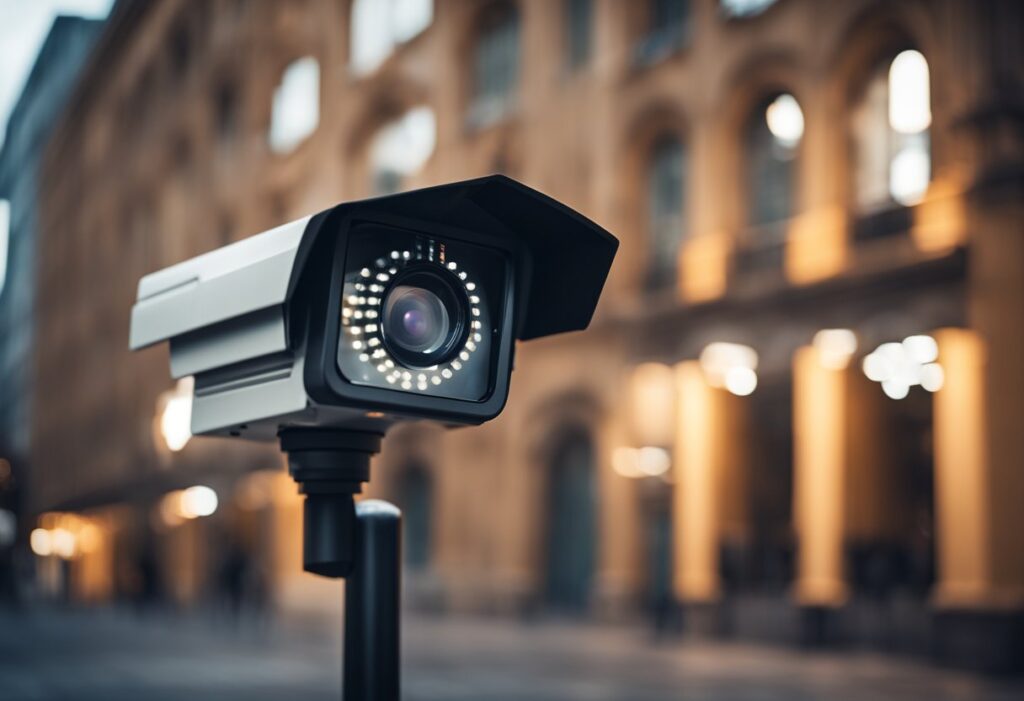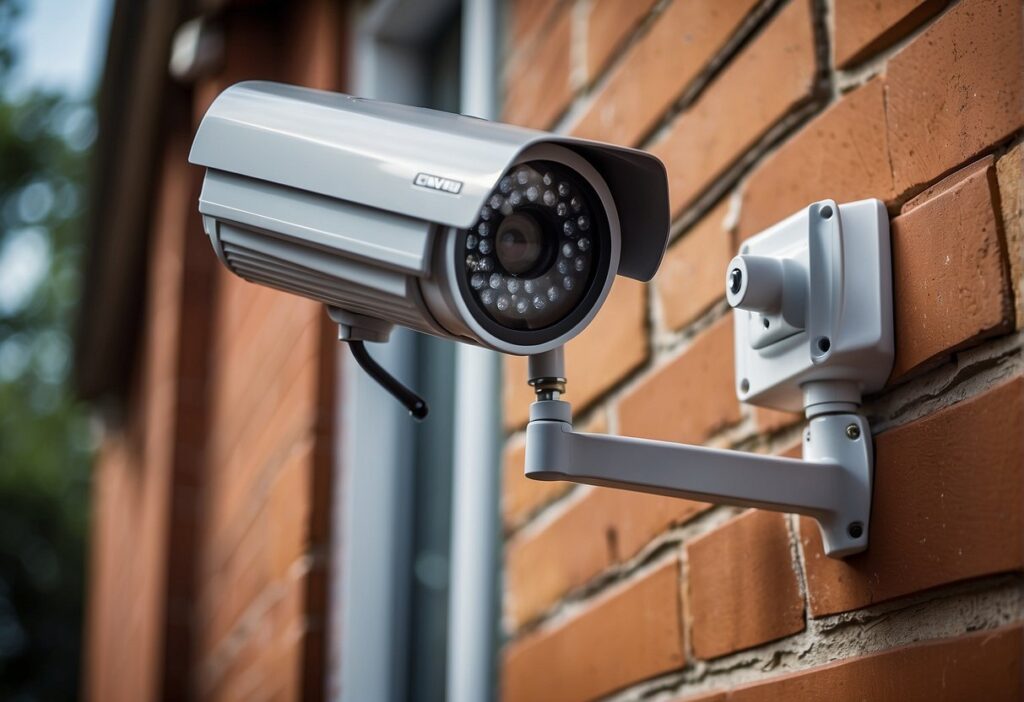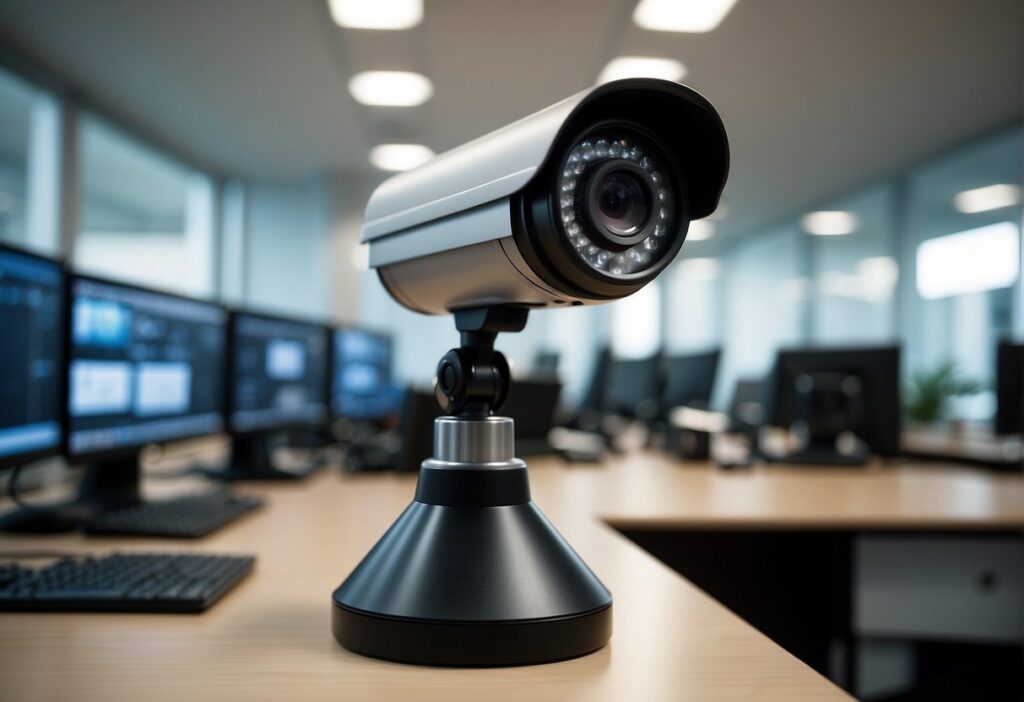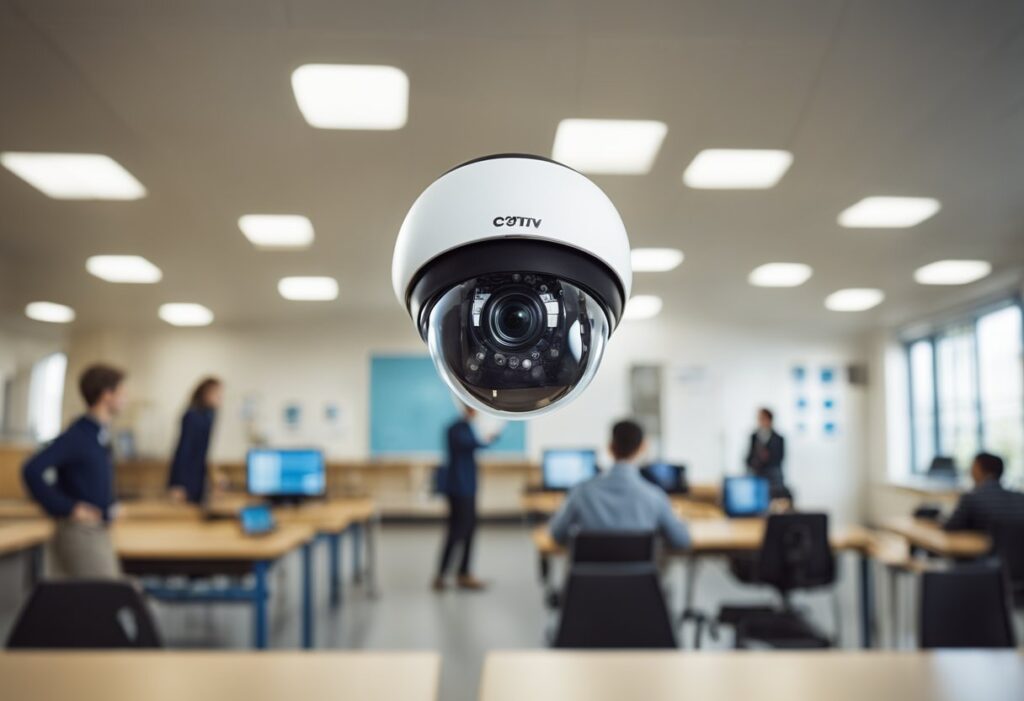(Purchases through our site links may earn us affiliate commissions.)
Features of CCTV
Closed-circuit television, or CCTV, has become an integral part of security systems in a variety of settings, from homes to public spaces. It serves as the eyes of a security system, allowing for real-time surveillance and reassurance for property owners and law enforcement.
CCTV cameras play a pivotal role in deterring criminal activity, with their mere presence often discouraging potential offenders. Beyond basic monitoring, technological advancements have enabled CCTV systems with features such as motion detection, night vision, and real-time surveillance capabilities, enhancing the effectiveness of security efforts.
Key Takeaways
- CCTV systems offer real-time surveillance and increased security.
- Technological advances have enriched CCTV functionalities.
- Proper installation and understanding legal considerations are essential for effective usage.
Features of CCTV: Types of CCTV Cameras

CCTV surveillance technology has evolved significantly, offering multiple camera options tailored for specific environments and security needs. This section outlines the different types of cameras available.
Dome Cameras
Dome cameras are characterized by their dome-shaped housing, which makes it difficult for observers to discern the camera’s direction, thus offering a subtle option for security. They are commonly used in indoor scenarios such as retail stores and restaurants, typically blending with the environment.
Bullet Cameras
Bullet cameras are named for their elongated, cylindrical shape, resembling a bullet casing. Their design is ideal for outdoor use as they often come with a protective casing against the elements and are suitable for monitoring long, narrow spaces.
PTZ Cameras
PTZ cameras, short for Pan-Tilt-Zoom, allow the operator to control the camera’s movement and focus remotely. Featuring dynamic zoom capabilities, they can cover expansive areas, making them a versatile choice for large-scale surveillance.
Day/Night Cameras
Day/Night cameras are capable of operating in both well-lit and low-light conditions. They do not require infrared illuminators as they can capture clear video in both scenarios, making them suitable for 24/7 surveillance.
Wireless Cameras
Wireless cameras offer flexibility and ease of installation, as they transmit footage over the internet or other wireless networks and are not tethered by cables. This feature makes them ideal for locations where wiring is impractical or for temporary setups.
Thermal Cameras
Thermal cameras detect heat signatures and are, therefore, effective in darkness or challenging weather conditions. They’re particularly useful for perimeters, border surveillance, and in areas with smoke, fog, or dust.
Discreet Cameras
As the name suggests, discreet cameras are designed to blend into the surroundings, making them nearly invisible to the unsuspecting eye. They work well in sensitive environments where overt surveillance might be inappropriate or unwelcome.
Key Features and Technologies

CCTV systems are equipped with a variety of features that enhance security monitoring. These technologies not only capture video but also analyze and interpret footage to support safety and security measures.
High-Resolution Output
High-resolution cameras are instrumental in capturing clear, detailed images. They allow for the identification of individuals and objects which is crucial in security applications.
Systems with high-resolution capabilities ensure that the footage is of sufficient quality for both real-time monitoring and evidence purposes.
Motion Detection
Motion detection technology enables CCTV systems to alert when movement occurs within their field of view. This function conserves storage space by recording only when necessary and enhances security by focusing on potential threats or activities.
Night Vision Capabilities
CCTV cameras with night vision can record in low-light conditions, which is essential for round-the-clock surveillance. They use infrared technology to ensure that even in complete darkness, the camera’s feed remains visible and useful.
Remote Access and Control
Remote access allows users to view and manage their CCTV system from anywhere via internet-connected devices. This remote access feature complements the modern need for flexibility and on-the-go surveillance management.
Video Analytics
With video analytics, CCTV cameras interpret video content to recognize patterns, detect anomalies, and provide actionable insights. This technology turns standard footage into valuable data for better decision-making in security protocols.
Zoom and Pan Functions
Cameras with zoom and pan functions afford users the ability to follow subjects or events closely. These capabilities enhance the versatility of the cameras, making them adaptable to different surveillance requirements and scenarios.
Connectivity and Storage Options
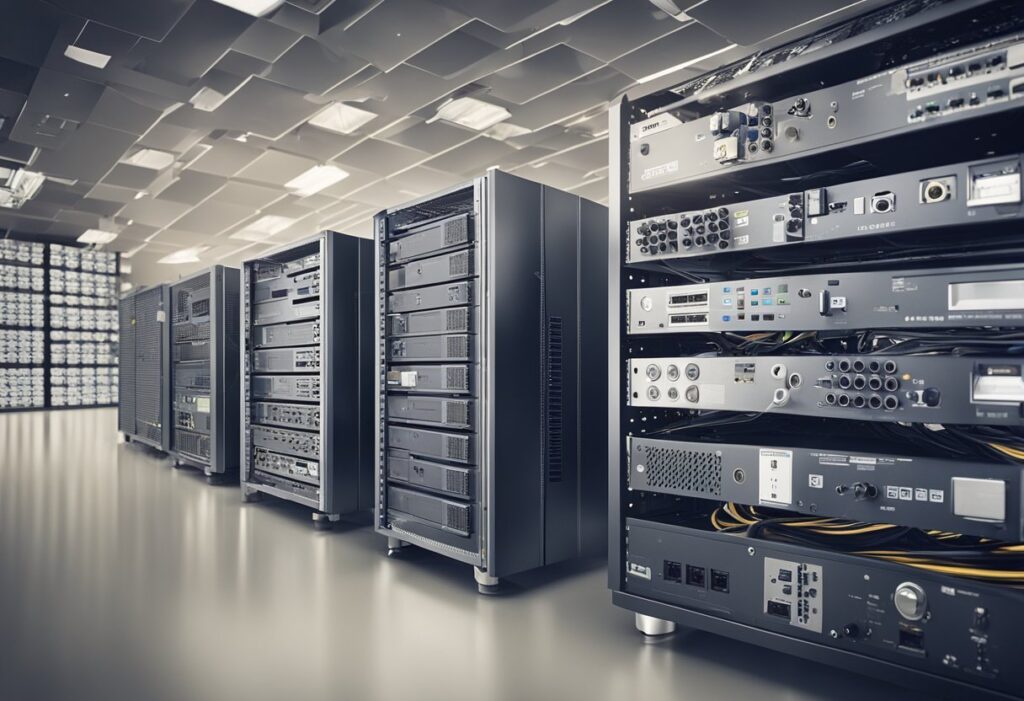
The architecture of CCTV systems has expanded to include diverse connectivity and storage options to suit different surveillance needs. This expansion in technology ensures CCTV systems are adaptable for various environments and applications.
Local Storage Systems
Local storage typically involves saving footage directly on physical hardware such as hard drives or network video recorders (NVRs). Systems utilizing local storage like NVRs are often favored for their reliability and controlled access, as they are less reliant on internet connectivity and can offer robust on-site data retention.
Cloud Storage Solutions
By contrast, cloud storage solutions provide flexibility through remote access and potentially unlimited storage capacity. These systems allow for the archival and retrieval of CCTV footage from virtually any location with internet access, frequently backed by layers of security for data protection.
Wireless vs Wired Connections
CCTV systems come in both wireless and wired formats. Wired connections often present fewer interruptions and are traditionally seen as more secure, though they may require professional installation.
On the other hand, wireless CCTV systems afford easier setup and greater placement flexibility, which makes them ideal for areas where running wires is impractical. However, the reliability of wireless systems can be influenced by factors such as signal range and interference.
Installation and Scalability
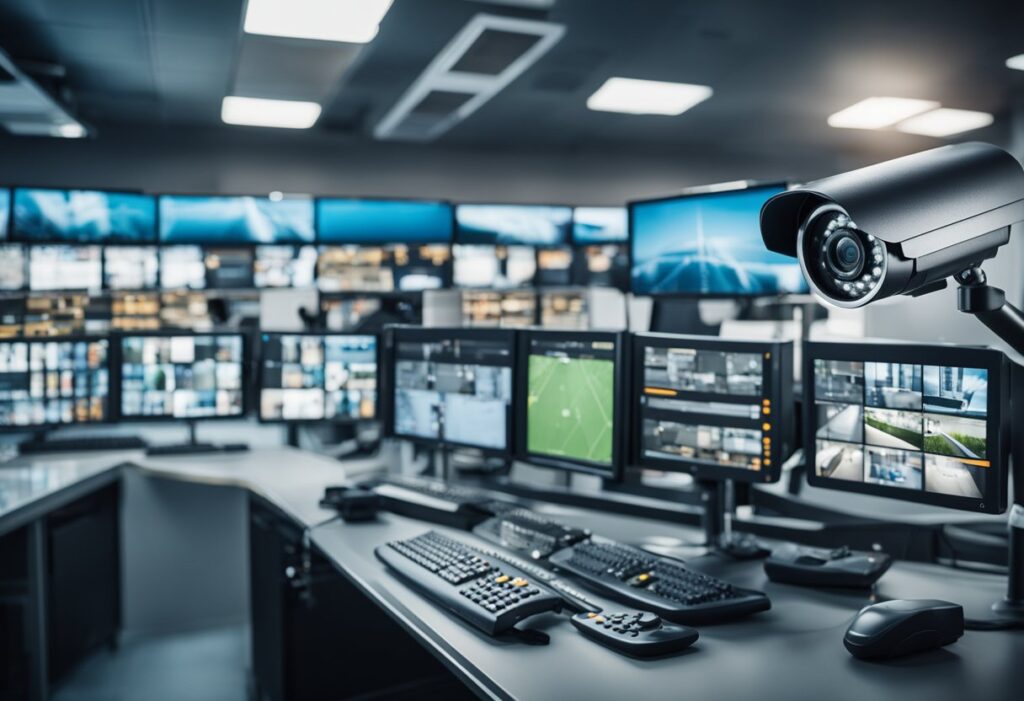
Choosing the right CCTV system requires careful consideration of initial installation options and future scalability to ensure it meets long-term security needs.
Professional vs DIY Installation
Professional installation by a certified technician ensures that the CCTV system is set up correctly and securely. They often provide valuable expertise on camera placement and network setup.
On the other hand, DIY installation may be more cost-effective and can be accomplished if the homeowner is tech-savvy, especially with systems designed for easier setup.
Expanding Your Security System
Security systems must be scalable to adapt to changing security needs. Whether it’s integrating access control systems or adding new cameras, a CCTV system’s ability to scale is critical.
Households and businesses should look for CCTV models that allow for easy additions, considering not just physical installation but also network and storage capabilities.
Legal and Ethical Considerations
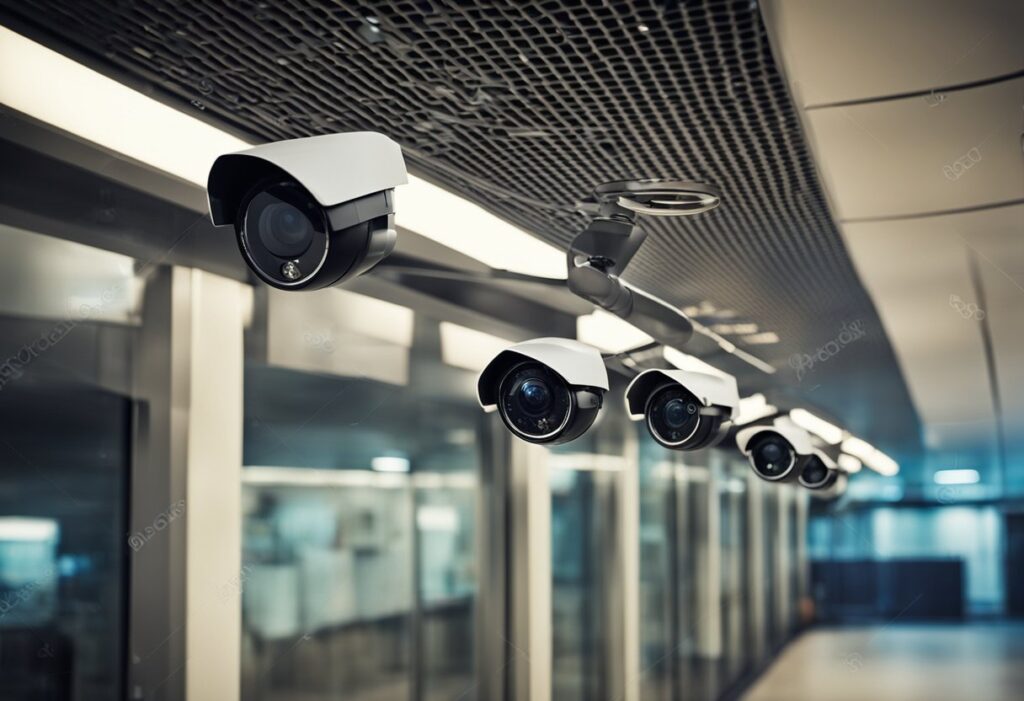
CCTV systems bridge the gap between security needs and privacy rights. This delicate balance places significant weight on legal frameworks and ethical guidelines.
Privacy Issues
The utilization of CCTV as a surveillance system requires careful consideration of individual privacy. Concerns arise where surveillance extends to private areas, threatening to deter personal freedoms.
Literature from the Department of Homeland Security suggests implementing privacy best practices in the deployment of CCTV to mitigate such issues.
On the one hand, CCTV can provide increased security in public spaces, while on the other, it can lead to potential abuse if not monitored and regulated correctly.
Compliance with Regulations
CCTV operation must follow legal guidelines to ensure compliance with laws and regulations. This encompasses everything from how CCTV footage is stored and who has access to it, to how long the data can be retained.
For instance, the U.S. Justice Department articulates specific conditions under which CCTV surveillance can occur without contravening legal statutes. Legal documents serve as the backbone for outlining the appropriate use of CCTV technology, guaranteeing that surveillance practices align with established legal standards and protect individuals against undue intrusion into their private lives.
Conclusion
Features of CCTV
In the evaluation of CCTV systems, it is established that their fundamental features play a critical role in their effectiveness. High resolution is integral, where a 1080p resolution is often the recommended standard for clarity.
CCTV systems serve multiple purposes; they create safer environments and aid in legal compliance and auditing. They also provide managerial support, deter crime, and furnish investigation material through recording capabilities. The integration of technologies such as artificial intelligence has supercharged these systems, enhancing the analysis of behavior and activity.
Effective CCTV systems often have a deterrent effect on property crimes and theft, with some studies showing significant reductions in car park thefts due to surveillance. It is not just the presence of cameras that matters; the strategic placement and integration within a broader security protocol determine their success.
Certain advancements in CCTV technology have pointed towards a decline in thefts of up to 40% in monitored spaces. As technology progresses, the functionality of CCTV systems is expanding, making them an essential tool in both corporate and public sectors for a wide array of security needs.
